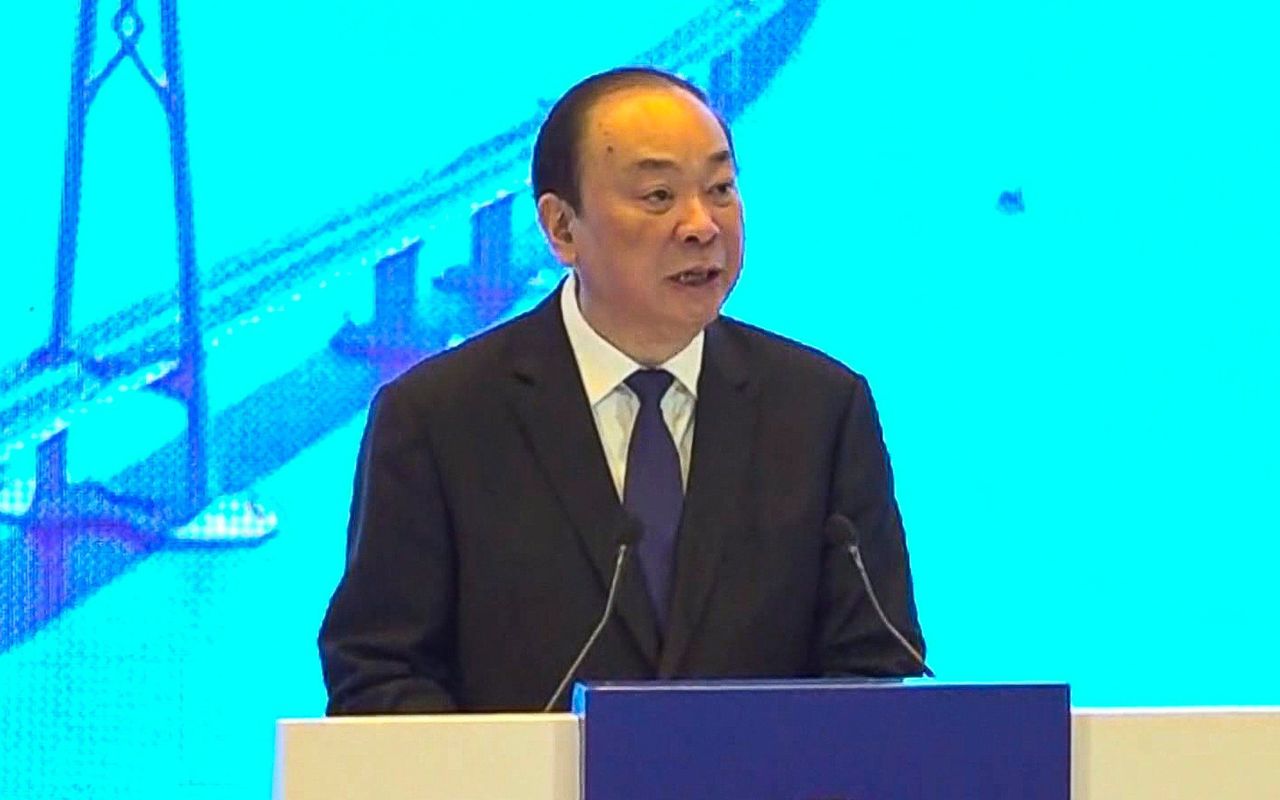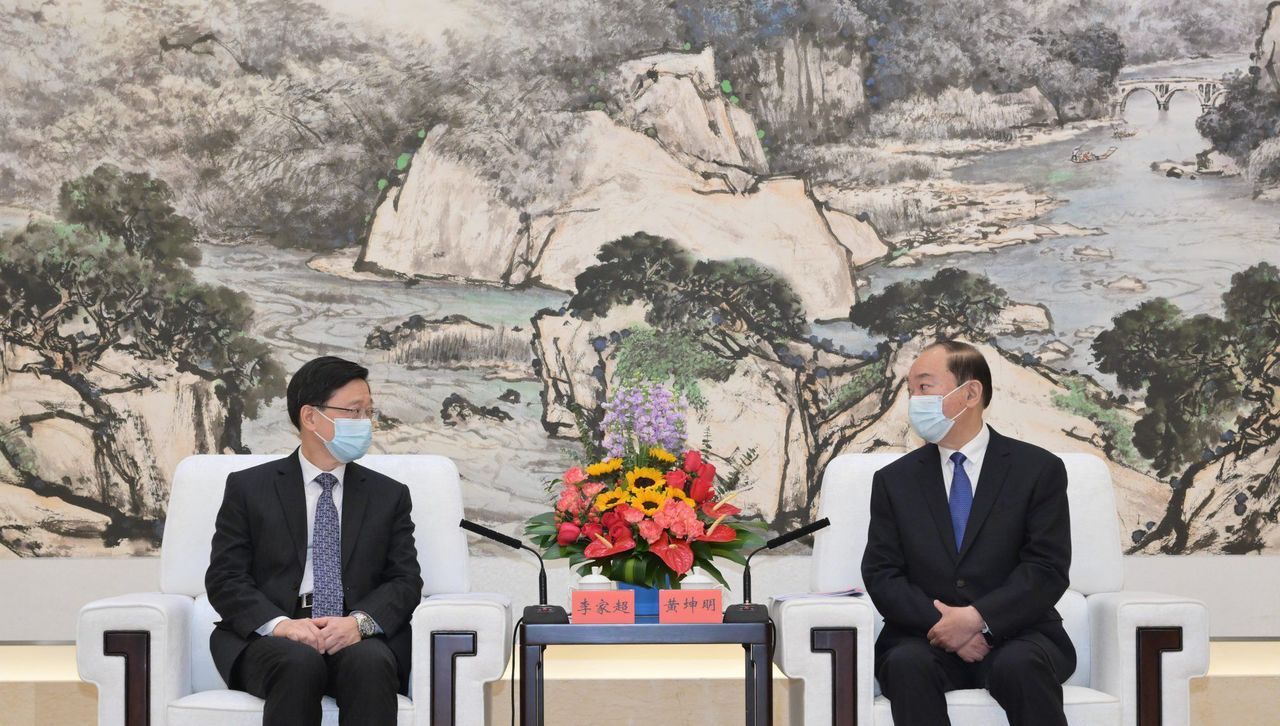Hong Kong News

Greater Bay Area poised for post-Covid lift-off, says Guangdong party chief
The coronavirus pandemic disrupted plans to transform Hong Kong, Macau and nine Guangdong cities into an economic powerhouse, but the area is now poised for a new lift-off to become an international, market-oriented business region as envisioned by Chinese President Xi Jinping, the province’s top official has said.
Newly promoted Guangdong party secretary Huang Kunming on Friday said he also encouraged young people from Hong Kong to head north for opportunities and wanted the 11 Greater Bay Area cities to work together on the “hardware” and “software” fronts – or facilities and systems – he told media chiefs visiting Guangzhou on Friday.
“I hope the media can … truly reflect the real benefits brought by the Greater Bay Area to the citizens of all cities, especially the opportunities for young people on innovation and entrepreneurship,” said Huang, who is also a member of the powerful Politburo of the Chinese Communist Party.
“The young people in Hong Kong, especially, can devote themselves to the construction of the Greater Bay Area and work together to build our homes.”
 Guangdong party secretary Huang Kunming.
Guangdong party secretary Huang Kunming.
In a blueprint first revealed in 2019, Xi’s Greater Bay Area plan aims to integrate Hong Kong, Macau and nine mainland cities into an economic powerhouse to rival other innovation and financial hubs such as Silicon Valley and the Tokyo Bay Area.
The road map said that by 2022, the bay area would “have boosted its economic strength significantly through deepened cross-border cooperation”, and by 2035, the region would be “fully established as a world-class city cluster” where people would want to live, do business and visit.
As a major national strategy “personally planned, deployed and promoted” by Xi, Huang said the 11 cities had made concerted efforts to accelerate the “hard” connectivity of infrastructure and the “soft” connectivity of rules and mechanisms in recent years with “fruitful results and bright prospects”.
On hardware, there were new facilities for airports and ports, as well as the construction of infrastructure including the Hong Kong-Zhuhai-Macau Bridge and high-speed rail.
On the software front, officials had continued to study how to engage different systems especially when these involved Hong Kong and Macau – China’s two special administrative regions with their own set of taxation and legal systems.
It was understood the two governments had been trying very hard to boost connectivity between Hong Kong and Guangdong, especially provincial capital Guangzhou, by exploring ways to enable more vehicles to go north. Currently, their entry is limited to a fixed number of special licences.
The meeting with media representatives came a day after Chief Executive John Lee Ka-chiu met Huang for talks in which the party secretary pledged to enhance collaboration of “high-quality development” with the city in several key areas, especially the flow of talent, innovation and technology, and financial services.
 John Lee (left) met Huang Kunming in Guangzhou on Thursday.
John Lee (left) met Huang Kunming in Guangzhou on Thursday.
The high-level exchange took place almost three weeks after quarantine-free travel fully resumed between Hong Kong and the mainland on February 6. With a population of 127 million, Guangdong is China’s largest provincial economy.
Reiterating the idea on Friday, Huang said the province would focus on high-quality development in the bay area, and ensure major zones such as Qianhai in Shenzhen and Nansha in Guangzhou would strive to become international, market-oriented economic environments ruled by law.
“[We will] join hands with Hong Kong and Macau to develop their strengths and superimpose their advantages to further tap and release the huge potential of the development of the Greater Bay Area, and turn it into a world-class bay area,” he added.
Huang also encouraged Hong Kong media representatives to visit Guangdong more often to understand the changes in the province and report to the wider world comprehensively.











